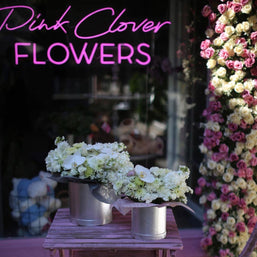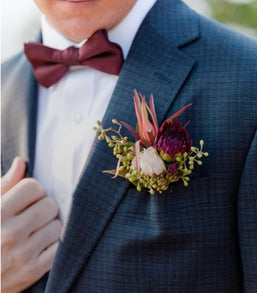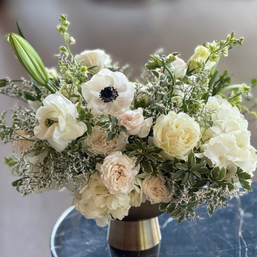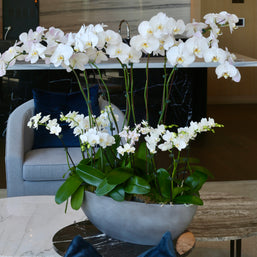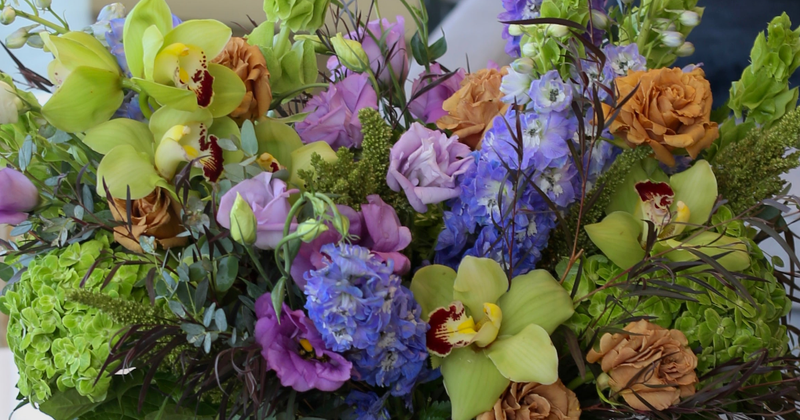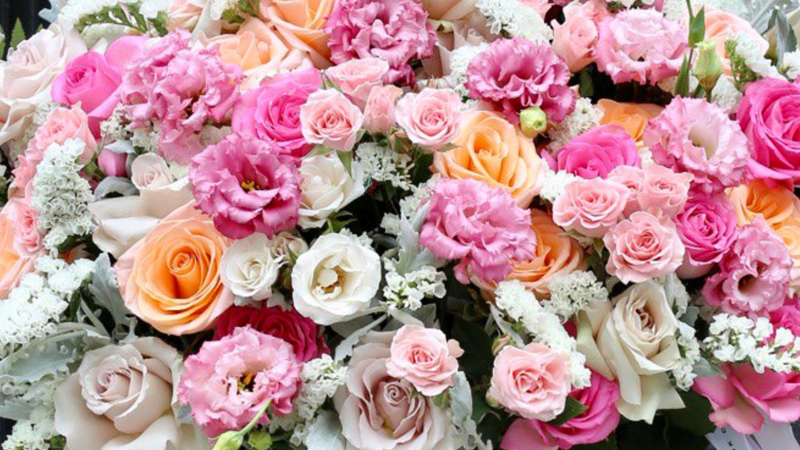Flowers have long held a special place in human culture — not just for decoration, but as symbols, tools of ritual, and — increasingly — as therapeutic aides.
Floral therapy (also called floricultural therapy or flower therapy) is the deliberate use of flowers, floral arranging, and plant interactions to promote emotional well-being, reduce stress, and support various therapeutic goals. What makes floral therapy especially compelling is that it can be accessible, low cost, minimally invasive, and adaptable to many settings — from schools and care homes to family living rooms.
In recent years, therapists, caregivers, and researchers have begun to explore how floral therapy might support individuals on the autism spectrum. Because flowers provide sensory engagement, a gentle structure, and opportunities for nonverbal communication, floral therapy can complement other therapeutic approaches.
In this article, I cover:
- What floral therapy is, how it works, and its underlying mechanisms
- Evidence and statistics for its effects (especially for stress relief)
- How floral therapy could be used for autism support
- A comparison with equine therapy (horse-based interventions)
- Practical advice for implementing floral therapy at home or in therapeutic settings
- Challenges, limitations, and future directions
What Is Floral Therapy?

Definition and Scope
Floral therapy broadly refers to structured or guided interactions with flowers and plant materials to enhance emotional, cognitive, or social well-being. It is often nested under the broader umbrella of therapeutic horticulture, which uses gardening and plant care for therapeutic ends. In floral therapy specifically, emphasis may fall on:
Flower arranging, which encourages focus, creativity, and emotional regulation through the process of selecting, trimming, and placing blooms into pleasing compositions.
Handling and caring for cut blooms, allowing individuals to engage in gentle, repetitive movements that promote mindfulness and a sense of responsibility as they maintain the freshness of each flower.
Pressing and preserving flowers, offering a slower-paced, tactile experience that helps capture beauty in a lasting form, often used in craft projects or reflective journaling.
Creating decorative or ritual floral designs, which can connect people to cultural traditions, seasonal changes, or personal milestones through meaningful and symbolic arrangements.
Sensory engagement (smell, color, texture) through flower contact, which stimulates the senses in a calming and non-intrusive way, making it especially beneficial for those with sensory processing sensitivities.
Mindful observation or journaling about flowers, inviting participants to notice small details in color, shape, or fragrance, and reflect on their emotions or thoughts in a grounded and peaceful way.
Floral therapy doesn’t require a garden or outdoor space — it can happen indoors with vases, potting trays, and basic tools.
How It May Work: Mechanisms of Benefit
Why might interacting with flowers help reduce stress or support mental health? Several interlocking mechanisms may contribute:
-
Sensory stimulation and regulation
Flowers engage multiple senses — sight, smell, touch — in gentle ways. Soft petals, subtle fragrance, color contrasts, and organic shapes can help calm the nervous system rather than overstimulate it. This is especially relevant in autism, where sensory input needs to be carefully managed. -
Attention restoration and micro-“nature dose”
Exposure to natural elements (even small ones) is known to help restore attention and reduce mental fatigue. This draws from Attention Restoration Theory (ART), which posits that interacting with elements of nature (trees, water, birds, plants) can help the mind recover from stressful cognitive load. Floral therapy provides a manageable “dose” of nature indoors. -
Mindfulness, flow, and reduced rumination
Arranging flowers or focusing on petals’ colors and textures can create a flow state or mindful engagement — absorbing attention away from worries and ruminative thinking. This breaks cycles of stress or anxiety. -
Creative expression and agency
Working with flowers gives a gentle, nonthreatening medium for self-expression. Choices about arrangement, color combinations, and tactile interaction can enable emotional expression, especially for those who struggle with verbalization. -
Physiological effects
Some research suggests that exposure to plants and flowers may lower cortisol (a stress hormone) and reduce blood pressure, heart rate, or physiological markers of stress. (We’ll see evidence below.) -
Sense of accomplishment and mastery
Completing a small floral project, seeing it bloom or last, gives a sense of competence and control — which can counteract feelings of helplessness or overwhelm.
Evidence and Statistics: Floral Therapy and Stress Relief
To support claims about floral therapy, we can look at research in floral arranging, horticultural therapy, and related domains.
Stress Reduction and Mood Enhancement
A study titled The Physiological and Psychological Relaxing Effects of Viewing Roses showed that viewing rose flowers helped reduce blood pressure and heart rate and promoted feelings of calm. PMC
The Emotional Impact of Flowers Study (Rutgers University) found that giving men flowers increased social behaviors and happiness, indicating a measurable emotional response to flower gifting. safnow.org
In Floricultural Therapy: A Blooming Approach to Mental Health, authors note that exposure to flowers may reduce cortisol levels and increase dopamine (a “feel-good” neurotransmitter), supporting relief from anxiety or stress. justagriculture.in
The therapeutic horticulture field more broadly shows that gardening and plant activities help reduce depression, anxiety, and stress, and improve self-esteem and mood. For example, a North Carolina therapeutic horticulture article points to multiple studies showing flower arranging is linked with reduced anxiety, improved mood, and increased self-esteem for participants. therapeutic-hort.ces.ncsu.edu
While many of these studies do not focus exclusively on “floral therapy” in autism, they provide a foundation showing that interacting with flowers can have measurable, beneficial effects on stress and emotional well-being.
Cognitive and Mental Health Benefits
In a controlled study, participants who engaged in a Structured Floral Arrangement (SFA) program — involving arranging flowers under guided conditions — showed improvements in mood, attention, and cognitive function, particularly among patients with brain injuries. PMC
Some florists and therapeutic practitioners report that floral workshops or classes help participants with creativity, problem-solving, social interaction, and emotional regulation. floristsreview.com+1
Though the evidence is growing, it is still limited compared to more established therapies. More rigorous, large-scale trials are needed.
Limitations of the Evidence
Many studies are small, qualitative, or lack control groups, which limits the strength and generalizability of their findings. In many cases, results rely heavily on self-report and subjective impressions, without consistent use of validated tools or objective measurements.
It’s also difficult to separate the specific effects of working with flowers from the broader benefits of engaging in any calming, hands-on activity or simply being in a therapeutic setting. The soothing environment, supportive facilitation, and focused time away from daily stressors may all contribute, making it hard to isolate what role the flowers themselves actually play.
Few studies explore long-term effects or focus specifically on autism or other neurodivergent populations. Most research looks at short-term emotional or cognitive changes, with little data on sustained outcomes or population-specific adaptations.
Still, despite these limitations, current literature supports floral therapy as a gentle, low-risk practice that can serve as a complementary support alongside primary treatments — especially in stress management and sensory-based approaches.
Floral Therapy and Autism Support
Now let’s explore how floral therapy might support individuals on the autism spectrum.
Why Floral Therapy Has Promise in Autism
Autism spectrum disorder (ASD) is characterized by differences in social communication, sensory processing, repetitive behaviors, and emotional regulation. Because of these features, therapies that manage sensory input, offer structured engagement, and allow nonverbal expression are especially useful. Floral therapy aligns well with these needs for several reasons:
-
Controlled Sensory Stimulation: Select flowers with mild fragrance and soft textures to avoid overwhelming sensory input. The sensory exposure is customizable.
-
Nonverbal Expression: Arranging flowers or choosing colors allows a nonverbal mode of communication, especially beneficial for nonverbal or minimally verbal individuals.
-
Fine Motor Skills & Coordination: The act of placing stems, trimming petals, and arranging blooms can help develop fine motor control, hand–eye coordination, and dexterity.
-
Routine and Structure: Caring for plants or engaging in floral tasks on a schedule can introduce predictability and structure — comforting to many autistic individuals.
-
Emotional Regulation and Focus: Working with flowers provides a calming, absorbing activity that encourages focus, lowers hyperarousal, and gives a break from intrusive thoughts.
-
Social Interaction Opportunities: In group settings (like classrooms, clinics, or community programs), floral therapy can encourage collaborative design, conversation, sharing supplies, and mutual appreciation.
Evidence, Case Studies, and Considerations
While direct research on floral therapy in autism is sparse, some related findings and conceptual support point to its viability:
The Structured Floral Arrangement (SFA) program (mentioned above) was tested with patients who had cognitive impairments or brain damage; some benefits in attention and mood were noted. PMC This suggests that guided floral tasks can benefit populations with neurological challenges, which may extrapolate to ASD with adaptation and further study.
The broader field of therapeutic horticulture has been used in developmental and special education settings, though not always focused on cutting/arranging flowers.
Autism intervention best practices often emphasize sensory-based, structured, creative, and nonverbal modalities. Floral therapy fits that profile better than many high-stimulation alternatives.
That said, more empirical trials are needed specifically for ASD populations to measure effects on communication, emotional regulation, sensory response, and quality of life.
Comparing Floral Therapy to Equine (Horse) Therapy
Equine therapy (also called equine-assisted therapy, therapeutic horseback riding, or equine-assisted activities and therapies — EAAT) is one of the most studied animal-assisted therapies for autism. Comparing floral and equine therapy helps clarify where each is strong, and how they might complement one another.
What is Equine Therapy?
Equine therapy involves participants interacting with horses through grooming, feeding, leading, and sometimes riding, under the guidance of therapists or instructors. The horse’s responses (movement, feedback, rhythm) provide sensory and emotional cues that the participant engages with. This therapy is thought to support social, emotional, motor, and communication development.
Evidence for Equine Therapy in Autism
A systematic review (2023) of EAAT programs found that they can substantially improve social, behavioral, and communication functioning in children with ASD, particularly in domains like irritability, hyperactivity, and social communication. MDPI
In one trial, therapeutic horseback riding (THR) participants maintained improvements in irritability, social communication, and language scores at 6 months post-intervention. Frontiers
The SRU study (Slippery Rock University) on adolescents with autism measured salivary cortisol before and after therapeutic riding and found that both riding and a validated stress-management protocol (HeartMath) significantly reduced cortisol. sru.edu
However, not all results are consistently positive. Some small studies show limited behavioral change or only modest effects. ScienceDirect
Overall, equine therapy is considered “promising” but not universally effective; it tends to be used as a complement rather than a standalone solution.
Strengths & Limitations: Floral vs. Equine Therapy
| Feature | Floral Therapy | Equine Therapy (EAAT / THR) |
|---|---|---|
| Accessibility & cost | Low cost, can be done indoors, minimal equipment | Requires a stable, horses, training, insurance, transport |
| Sensory intensity | Low to moderate, customizable | Higher intensity (movement, smell, tactile feedback) — can be overstimulating for some |
| Safety / risk | Low risk (thorns, allergies) | Risk of falls, animal unpredictability, outdoor conditions |
| Physical benefits | Fine motor work, hand coordination | Gross motor work, balance, posture, vestibular stimulation |
| Social / emotional feedback | Feedback from activity, shared tasks, group interaction | Immediate feedback via horse behavior, emotional bond, human-animal connection |
| Evidence base | Emerging, limited, more qualitative | More robust, moderate evidence base in autism and therapeutic settings |
| Scalability | Easy to scale to schools, clinics, homes | Requires specialized facilities, staff, upkeep |
In short, equine therapy brings powerful multisensory feedback and a strong human–animal bond, which many participants find meaningful. But it is resource-intensive and not accessible to everyone. Floral therapy, by contrast, is low-barrier, safe, and easier to deploy in everyday settings — making it a useful complementary tool, especially where equine therapy isn’t feasible.
How to Implement Floral Therapy: Practical Guide
Here’s a roadmap for bringing floral therapy into home, educational, or therapeutic contexts — particularly for stress relief and autism support.
1. Planning and Setting Up
-
Goal definition: Decide whether your goal is stress reduction, emotional expression, motor skills, social interaction, or a mixture.
-
Space & materials: Use a low-odor, well-ventilated indoor space. Provide sturdy surfaces, vases, scissors, floral foam (optional), trimming trays, small tools, and paper towels.
-
Flower selection: Choose flowers with mild scents and non-toxic petals (e.g., roses, carnations, peonies, chrysanthemums). Avoid strong-smelling, allergenic, or spiky varieties.
-
Safe workspace: Cover tables with plastic or kraft paper. Use water containers with stable bases to avoid tipping.
2. Starting Simple: Beginner Flower Activities
-
Single-stem appreciation: Give one bloom and invite the person to observe its colors, petals, smell, and shape.
-
Petal exploration: Let participants touch, sort, or group petals by color or shape.
-
Minimal arrangement: Provide one or two flowers and let them place stems into a vase in their own way.
-
Guided arrangement: Offer step-by-step instructions (e.g. tallest in back, filler in front). This is helpful for structured engagement.
-
Pressing flowers: Between book pages or in a press — good for quieter tasks or stretching across days.
-
Group activity: Collaborate in designing a communal bouquet, sharing materials, and discussing choices.
3. Structuring a Floral Therapy Session
Here’s a template (30–60 min):
-
Warm-up (5 min): Gentle breathing or flower observation
-
Instruction (5 min): Explain the task or theme (e.g., “make a mini bouquet for your desk”)
-
Activity time (15–25 min): Hands-on arranging, touching, or arranging
-
Reflection (5–10 min): Share feelings, ask about choices, encourage naming emotions
-
Closure (5 min): Clean up, display the arrangement, optional journaling or photo
For participants on the autism spectrum, adapt session length, minimize distractions, provide visual or verbal scaffolding, and offer breaks as needed.
4. Tips & Best Practices
Start small — short tasks with a limited number of blooms help avoid overwhelm.
Offer choice & control — let participants select flower types, colors, or arrangements.
Monitor sensory comfort — if any fragrance or touch is bothersome, scale back or shift to non-scented varieties.
Use visual scaffolds — example photos, step-by-step cards, or color cues can guide design.
Encourage repetition — repetitive placing or trimming can be calming and soothing.
Document progress — photos, journals, or portfolios help track growth and boost pride.
Include social elements — in small groups, allow sharing of materials, cooperative design, or gentle peer feedback.
Ensure accessibility — adapt tools for limited mobility (e.g. larger scissors, lower vases, seated tasks).
5. Measuring Outcomes & Feedback
If used in a therapeutic or programmatic context, consider collecting:
-
Self-report or caregiver-report measures of stress, mood, or emotional regulation
-
Observations of focus, engagement time, or task completion
-
Pre/post comparisons over weeks
-
Qualitative feedback: “How did it feel? What did you like or not like?”
-
Photographic documentation of arrangements created
Although metrics won’t replace traditional therapeutic outcomes, such data helps justify and refine floral therapy programs.
Challenges, Cautions, and Future Directions
While floral therapy is promising, there are caveats and areas needing more research.
Challenges & Limitations
Limited empirical evidence — much of the support is qualitative or small-scale; we need more controlled trials, especially in ASD populations.
Allergies & sensitivities — some may react to pollen, fragrance, or plant sap. Always check for allergies first.
Overstimulation — for people especially sensitive to textures or smells, even floral stimuli may become too much.
Fleeting nature of blooms — flowers wilt, which can introduce a sense of loss; some may find that emotionally challenging.
Facilitation required — unguided interactions may not be therapeutic; a facilitator or therapist trained in trauma-sensitive and autism-aware methods is beneficial.
Not a replacement therapy — floral therapy should augment, not replace evidence-based therapies (speech, occupational, behavioral interventions).
Future Research Opportunities
Randomized controlled trials comparing floral therapy with control or alternative interventions in individuals with autism are needed to determine its effectiveness more clearly. Longitudinal studies would help assess whether the benefits of floral therapy persist over time or fade after sessions end.
Research using neuroimaging or physiological markers—such as tracking cortisol levels—could provide objective evidence of how floral therapy affects the nervous system and stress response.
It would also be valuable to conduct comparative studies that examine floral therapy alongside other sensory-based approaches like horticultural therapy, animal-assisted therapy, and art therapies. Understanding where floral therapy fits among these options could guide treatment planning and resource allocation.
Further work is needed to adapt floral therapy for different populations, including variations by age, communication style, and sensory sensitivity. Customizing approaches based on individual needs would make the therapy more inclusive and effective.
Lastly, integrating floral therapy into schools, clinics, and community programs at scale would offer insight into how it functions in real-world environments and how sustainable or accessible it can be in diverse settings.
Concluding Thoughts
Floral therapy holds quiet but powerful potential. Because it is accessible, low risk, and adaptable, it offers a gentle pathway into healing — ideal for stress relief and a promising adjunct for autism support. While the evidence base is still emerging, the mechanisms (sensory engagement, mindfulness, creative expression) align well with what we know about therapeutic practices.
When placed alongside or integrated with more established therapies — such as speech therapy, occupational therapy, and behavioral interventions — floral therapy can enrich the toolkit of caregivers, educators, and therapists. And compared to resource-heavy interventions like equine therapy, floral therapy offers a hands-on, scalable “garden at hand” approach that can flourish even in small spaces.
Frequently Asked Questions (FAQ)
What is floral therapy?
Floral therapy is the use of flowers in structured activities—such as arranging, caring for, or observing blooms—to support emotional, cognitive, and sensory well-being. It’s often used for stress relief and as a complementary approach in mental health or special education settings.
Can floral therapy help individuals with autism?
Yes, floral therapy can support individuals on the autism spectrum by offering calming sensory input, structured routines, and nonverbal ways to express emotions. While research is still limited, it shows promise as a gentle, adaptable tool alongside other therapies.
Is there scientific evidence behind floral therapy?
There is growing evidence that working with flowers can reduce stress, lower cortisol levels, and improve mood. However, most studies are small or exploratory, and more rigorous research is needed to fully validate its benefits, especially for autism support.
How is floral therapy different from horticultural therapy?
Horticultural therapy focuses on growing and caring for plants in gardens, while floral therapy centers on working with cut flowers—through arranging, observing, or creating designs. Both aim to improve well-being but differ in tools and environment.
Do I need a garden to practice floral therapy?
No, floral therapy can be done indoors using simple tools like vases, flowers, and trimming supplies. It’s easy to adapt to small spaces such as classrooms, therapy rooms, or home tables.
How does floral therapy compare to equine therapy?
Equine therapy offers strong physical and emotional feedback through working with horses, but it requires access to stables and trained staff. Floral therapy is more accessible, less resource-intensive, and easier to implement in everyday settings.
